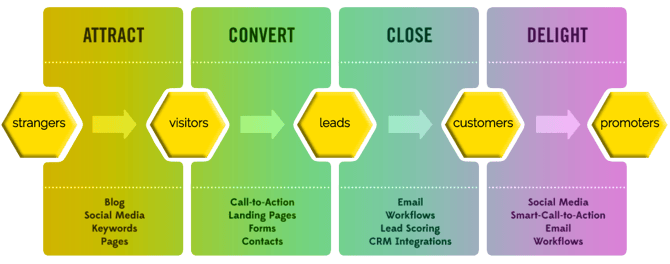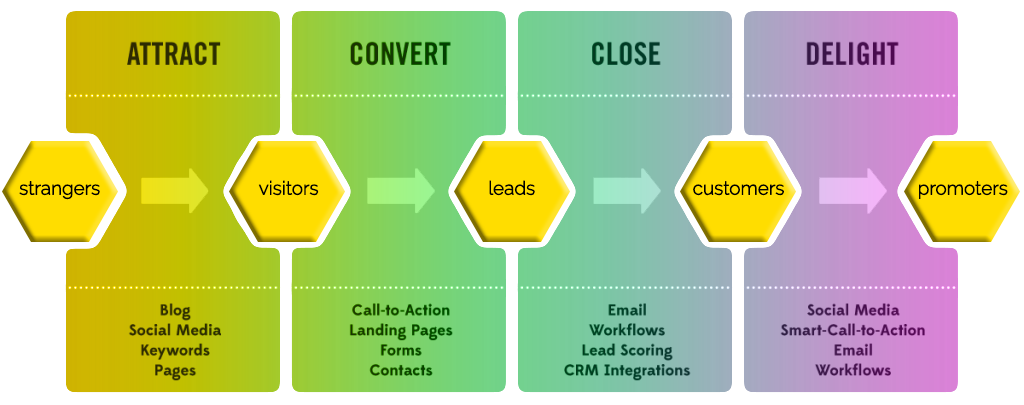I've talked a lot about lead nurturing and it's value in helping to grow your business. The fact of the matter is that not everyone is ready to buy the first time they come to your website. In fact 57% of the sales process is actually complete before a customer ever reaches out to a company. In our current world, customers have access to more information than ever before and they use that to their advantage by consuming mass amounts of research before they contact a salesperson. By the time your leads are contacting you, they most likely have thoroughly researched your business and all your competitors businesses and they probably have already decided that they want to work with you. But what about those prospects who come to your site, fill out a form and leave never to be seen again? That's where you're lead nurturing campaign comes into play, helping keep your business name in front of those people anticipating the moment they might finally be ready to make a purchase.
The mistake most companies make when it comes to their lead nurturing is stopping it once your lead has become a customer. Sure closing a lead into a customer is incredibly important but that doesn't mean that your relationship ends once they've signed a contract or made a purchase! Wouldn't you rather develop a long-term relationship with these people? If your answer to any of these questions is "yes" (and, trust me, it should be), read on.
What Happens After the Close?
Ok, you've closed the customer. They signed a contract or made a purchase and they've been moved from "lead" to "customer" status in your CRM. What you should be doing at this point is not ignoring these people but viewing your new customer as an opportunity. This person has joined your team, they've stood up and identified that they believe in the product or service you're offering and said they want to be a part of it By identifying themselves as a customer, this person opens up a number of different opportunities depending on your business type. If you provide a one-time-purchase type product, you can view this person as a potential return customer. If you provide a service that is subscription-based, then maybe this person becomes someone you can upsell into a higher level service. Both products and services, can benefit from return-customers. Take these stats for example:
- It costs 500% more to acquire new customers than it does to keep current ones.
- The cost of bringing a new customer up to the same level of profitability as an old one is up to 16x more.
- Lowering your customer churn rate by 5% can increase your profitability by 25-125%.
- On average, loyal customers are worth up to 10x as much as their first purchase.
- The average repeat customer spends 67% more in their 31st to 36th months of their relationship with a business than in months 0-6.
In addition to becoming return-customers, your current customers can actually serve to bring in more customers. Regardless of what type of product or service you provide, you should be viewing your customers as a potential brand promoter. We all know those brand promoters out there; they're your friends or family that continually talk about how great their favorite brand is and try to convince you to try it. In inbound marketing, we refer to the stage in which customers become brand promoters as the delight stage. And I'll address that next.
The Delight Stage
The delight stage is the stage where you, as a business, market to your current customers in hopes of creating brand promoters. In order to create brand promoters, it's your responsibility, as a business to nurture those customers into promoters.
Here's what that stage looks like in terms of the entire inbound methodology.

As outlined in the image above, there are a number of tactics you can implement in order to nurture your customers into promoters. Let's break them down one at a time:
Social Media
While social media is a great way to get in front of prospective customers, it's perhaps even better suited for delighting your current customers. You can use social media in this stage in a number of ways. You can continue providing valuable information, engage with your customers by responding to comments and messages, or even provide customer service by responding to questions and addressing issues. Keep in mind that your customers are most likely not going to be as interested in the same content than those who have not purchased from you. These people have already been sold so they're looking for content that is specifically developed for them. Maybe that means you need to develop informational videos that help them use the product or show them other great services that they might be interested in based on their purchase. Just keep in mind that the way you talk to current customers should be different from how you talk to leads.
SMART Calls-to-Action
Social media isn't the only place you can provide your customers with more relevant content. Your website is also a great place to help and SMART content is a great way to do that. Imagine if you, as a customer, went to your favorite brand's website and were served up with a call-to-action that provided additional information on the product you have already purchased? You didn't even have to fill out a form or search out the product page, you were provided with that content without having to do any extra work. Sounds pretty great, right? That's the beauty of SMART content. Developing content specifically based on the things your contacts have already done on your site provides a whole new level of engagement. And you can bet your customers will thank you for it.
Emails
For email, think about how you would like to be communicated with if you were a customer. Would you want to get the same information that leads are getting? Sales emails for the product you've already purchased? Probably not so don't do that to your customers either! If you segment your main database based on the lifecycle that your contacts are in and provide them with content that is relevant to their stage of the buyer's journey, you can be assured that the correct communications are going to the correct people.
Workflows
Workflows are a great way to help you continually stay in front of your customers without having to manually email each and every person. Just set up a workflow based on a series of criteria, turn it on and watch those emails shoot out to your customers. For more information on workflows, check out this blog post I wrote specifically about workflows for lead nurturing.
Regardless of what type of business you're in or who your customers are, there is value in developing the relationship beyond when your leads become customers. Who knows, you might just end up with a lifetime customer who tells all their friends and family (or even complete strangers) about your business and brings you tons of new business! Never underestimate the value of your current customers.



.png?width=100&height=100&name=The%20Complete%20Guide%20to%20HubSpots%20Prospecting%20Agent%20(2025%20Edition).png)

.png?width=100&height=100&name=Why%20Were%20Not%20a%20Marketing%20Agency%20(And%20What%20That%20Means%20for%20Your%20Growth).png)